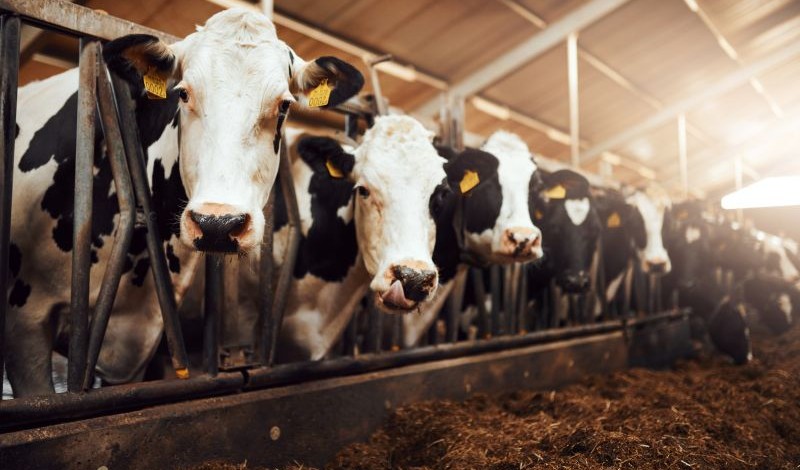
Scholars consider the contours of antitrust regulation in meatpacking.
Making chili this fall? If you buy ground beef, chances are it will come from one of the four companies that control more than 80 percent of the U.S. beef market.
In response to this high concentration, the U.S. Agricultural Marketing Service (AMS), an agency under the U.S. Department of Agriculture (USDA), issued a final rule in March 2024 defining and prohibiting practices—such as retaliation, discrimination, and misleading contracting—that harm the market.
Market harms often occur when a small number of firms control production. These dominant firms can reduce output to raise retail meat prices and pressure small farmers to accept lower payments for livestock. Small farmers have little leverage to negotiate fair terms. These conditions weaken competition, suppress rural incomes, and leave consumers with fewer and costlier choices.
These dynamics have affected the agriculture industry for over a century. When the Packers and Stockyards Act, which provides the basis for the 2024 rule, was enacted in 1921, its purpose was to promote fair competition and integrity in livestock and poultry markets. To pursue these goals, the Act requires prompt payment to livestock sellers, accurate weighing of livestock to ensure fair valuations, and prohibits the practice of dividing up territory or customers.
The 2024 rule complements the aims of the Act by mandating fair and transparent dealings between packers and producers. AMS explained that existing regulations failed to address the “unduly prejudicial, unjustly discriminatory, and deceptive practices” that persist in today’s concentrated markets. The 2024 rule addresses this gap by banning discrimination based on protected traits such as race or gender, retaliation against producers who organize or report abuses, and coercive or misleading contracting.
The rule’s impact was immediate. Within months of its May 2024 effective date, major industry groups, including the National Chicken Council and the Meat Institute, sued to block it. Their swift challenge indicates the rule’s potential to shift market power: Prohibiting deceptive, retaliatory, and discriminatory conduct could give smaller producers legitimate recourse against titans of the meatpacking industry.
The lawsuit progresses alongside efforts by the second Trump Administration to deregulate key U.S. industries, including agriculture. The 2024 rule remains in place for now, but USDA appears to be stepping back from issuing new rules. In January 2025, USDA withdrew a proposed rule that would have gone further to define unfair practices under the Packers and Stockyards Act. In September, USDA canceled a Biden-era partnership with state attorney generals that investigated anticompetitive behavior in agriculture and led to significant enforcement actions. These actions align with the Trump Administration’s broader shift away from regulatory enforcement.
In this week’s Saturday Seminar, scholars evaluate market conditions in the agricultural sector and propose antitrust solutions.
- In a report from USDA’s Economic Research Service, James MacDonald, Xiao Dong, and Keith Fuglie assess agricultural market concentration. MacDonald and his coauthors find that concentration has increased sharply in the last four decades in seed, livestock, and food retail markets. MacDonald and his coauthors attribute the growing consolidation in agriculture to technological advances, changing consumer demand, and supply chain alterations. The MacDonald team explains that mergers drove consolidation in the seed industry, helped by biotechnology innovation, stronger intellectual property protections, and private research and development. In meatpacking, MacDonald and his coauthors reveal that consolidation stemmed more from economies of scale and tighter vertical coordination between production and processing stages through reliance on contracting arrangements.
- In an article in the North Carolina Law Review, Luke Herrine, a professor at the University of Alabama School of Law, argues that growing consolidation in the livestock and meatpacking industries has allowed a few multinational firms to control nearly every stage of meat production—from breeding to processing—while squeezing farmers’ earnings and raising consumer prices. Herrine explains that these dominant packers use their market power to impose one-sided contracts, lobby against antitrust enforcement, and shape federal policy to stifle competition. He urges regulators to revitalize the Packers and Stockyards Act by strengthening oversight of unfair, deceptive, and discriminatory practices. Herrine concludes that stronger enforcement could rebalance market power and promote a more transparent and sustainable food system.
- Antitrust enforcement in the meat market leads to higher food prices, limited affordable options, and exacerbated hunger and malnutrition, argues Tammi S. Etheridge of Washington and Lee School of Law in an article in the Florida Law Review. Etheridge contends that rather than benefiting consumers, antitrust enforcement benefits small farmers. Given that one of the central purposes of antitrust law is to lower prices for consumers, it is counterintuitive to use antitrust enforcement to promote small meat farmers, whose product tends to be more expensive, Etheridge argues. Etheridge recommends moving away from antitrust enforcement toward a policy approach that promotes local, resilient, and sustainable food supply chains that may not necessarily be competitive in the conventional sense.
- In an article in the Yale Journal on Regulation, Erika Douglas, of the Temple University Beasley School of Law, warns that USDA’s long neglect of its antitrust powers under the Packers and Stockyards Act has allowed a few meatpacking companies to control more than 80 percent of beef processing. Douglas terms this failure “antitrust abandonment,” arguing that the government has let dominant processors fix prices and drive out smaller competitors. Douglas calls for renewed cooperation among the U.S. Department of Justice, Federal Trade Commission, and USDA to improve oversight of agricultural markets and protect farmers and consumers.
- “Chickenization” refers to the increase of the bargaining power of meat processors that results from vertical contracts with meat suppliers and an enhanced ability to gather consumer data, explains Salil K. Mehra, of Temple Beasley School of Law, in an article in the South Dakota Law Review. Mehra argues that antitrust enforcement is necessary to address the harms caused by “chickenized” meat processors, which exercise their power toward producers as exclusive buyers and toward retailers and consumers as monopolists. Recent antitrust enforcement efforts in the meat production industry have been largely ineffectual in the face of anti-regulation lobbying, Mehra contends. Mehra recommends strengthening antitrust law’s scrutiny of the kind of vertical agreements that promote chickenization.
- In an article in The University of Chicago Business Law Review, Spencer Parts, of The University of Chicago School of Law, argues that courts have weakened the Packers and Stockyards Act’s protections by occasionally requiring plaintiffs to prove “harm to competition.” Although USDA initially rejected this interpretation, Parts explains that USDA’s position has shifted over time—sometimes affirming that individual unfairness claims suffice and other times deferring to the courts’ approach. Parts contends that this inconsistency has left producers vulnerable. Parts concludes that eliminating the harm to competition requirement would be an important first step to protect small farmers, but meaningful protection ultimately depends on USDA taking a firm, consistent stance in rulemaking and actively supporting enforcement.
The Saturday Seminar is a weekly feature that aims to put into written form the kind of content that would be conveyed in a live seminar involving regulatory experts. Each week, The Regulatory Review publishes a brief overview of a selected regulatory topic and then distills recent research and scholarly writing on that topic.



